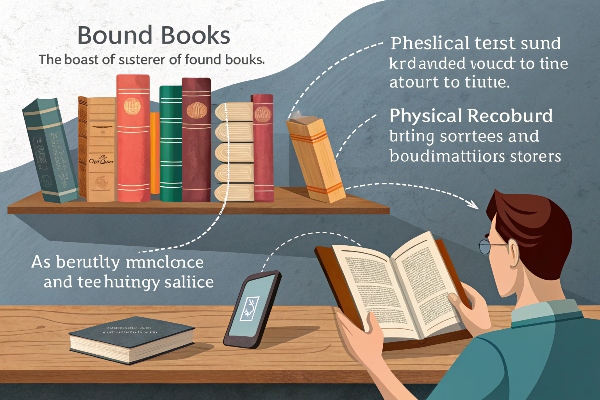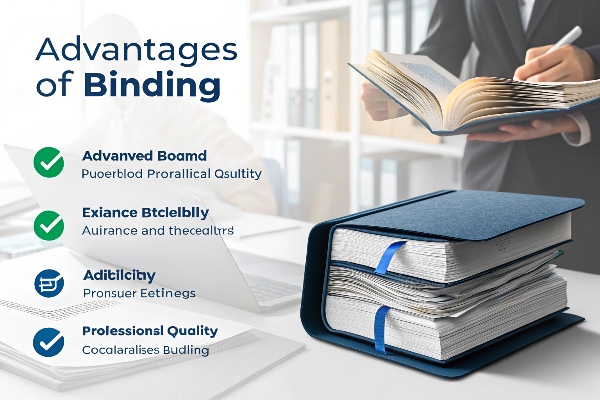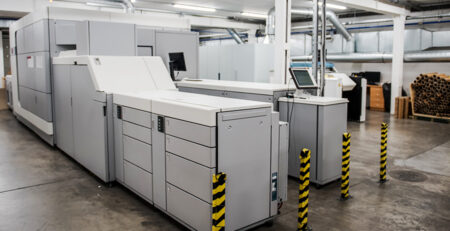Why is book binding important?
Loose pages getting lost or damaged? Important information scattered everywhere? Bookbinding organizes and protects your documents, making them last longer and look professional.
Bookbinding is crucial because it protects pages from damage, keeps them in the correct order for easy reading, and gives documents a professional, durable finish. It transforms loose sheets into a usable, lasting book.
But that’s just the surface. Let’s look closer at why we actually bind books and documents in the first place. Understanding the core reasons helps appreciate its value, whether for personal use or in business.
What is the reason for book binding?
Tired of shuffling loose papers? Worried about pages getting mixed up or damaged? Binding provides the structure needed for easy handling and long-term preservation.
The main reasons for bookbinding are to hold pages together securely in the correct sequence, protect them from wear and tear, and make the document easier to handle, read, and store.
Let’s dive deeper into these fundamental reasons. Binding isn’t just about slapping a cover on some pages; it serves very practical functions that make information accessible and durable. Think about trying to read a 300-page report printed on loose sheets – it would be a nightmare. Binding solves this.
Core Functions of Binding
| Function | Description | Benefit |
|---|---|---|
| Assembly | Physically joins individual pages together into a single unit (a block). | Prevents loss or misordering of pages. |
| Protection | Adds covers (soft or hard) and reinforces the spine. | Shields pages from spills, tears, and wear. |
| Usability | Creates a manageable format that can be held, read, and stored easily. | Improves the reading experience and storage. |
| Sequence | Ensures pages remain in the intended order as authored or printed. | Maintains logical flow and ease of reference. |
Essentially, binding transforms a fragile stack of paper into a robust, functional object. Whether it’s a simple spiral-bound notebook or a sturdy hardcover textbook, the binding method is chosen to match the intended use and desired longevity. Without binding, complex documents would be impractical, and preserving written knowledge would be much harder.
Why are bound books important?
Does digital feel fleeting? Worried about losing access to important files? Bound books provide a lasting, physical record that stands the test of time and technology.
Bound books are important because they preserve knowledge and stories physically, convey professionalism and value, offer a comfortable reading experience, and create a sense of permanence unlike digital formats.

The importance of bound books goes beyond just holding pages together. They carry weight, both literally and figuratively. In a world saturated with digital information, the physical book holds a special place. It represents permanence and tangibility.
Deeper Significance of Bound Volumes
- Preservation of Knowledge: Historically, binding was essential for preserving manuscripts and early printed texts. Libraries are built on this. Bound books ensure information survives in a stable, physical format, independent of technology failures or changing digital standards. It’s a reliable way to pass knowledge across generations.
- Professionalism and Perceived Value: Handing someone a professionally bound report or proposal signals seriousness and quality. A hardcover book, for instance, feels more substantial and valuable than a printout or an ebook file. For businesses, this presentation matters. In the bookbindery industry, creating high-quality hardcover books is a key service [^1].
- User Experience: Many people prefer the tactile experience of reading a physical book – the feel of the paper, the act of turning pages. Bound books don’t require batteries, software updates, and don’t suffer from screen glare. They offer a focused, distraction-free reading experience.
- Tangible Legacy: A bound book is a physical object that can be owned, displayed, and passed down. It creates a connection that digital files often lack. Think of treasured family photo albums or signed first editions – their physical form is part of their value.
Is book binding a skill?
Think bookbinding is just pushing a button? Overlooking the skill involved can lead to poor quality. Understanding the craft reveals the blend of human expertise and machine precision needed.
Yes, bookbinding is definitely a skill, involving craftsmanship, material knowledge, and precision. While machines automate processes, skilled operation and setup are crucial for high-quality results, especially in complex binding.

Bookbinding exists on a spectrum, from intricate handcraft to high-speed industrial production. While technology has transformed the industry, the element of skill remains vital at every level. It’s not just about operating machinery; it’s about understanding the process and materials.The Blend of Craft and Technology
- Hand Binding: This traditional craft requires deep knowledge of materials (paper grain, adhesives, cover boards), meticulous hand-eye coordination, and patience. Every step, from sewing sections to shaping the spine and attaching the cover, demands expertise.
- Machine Binding: Modern binderies rely heavily on machinery for efficiency and consistency. However, skilled operators are essential. They need to:
- Understand Materials: Know how different papers, glues, and cover materials will behave in the machines.
- Set Up & Calibrate: Precisely configure machines like casing-in machines[^4] (which attach the book block to the cover) or rounding machines[^5] for specific job requirements. Incorrect setup leads to poor quality.
- Perform Quality Control: Monitor the output constantly, identifying and correcting issues like misaligned covers, weak adhesion, or incorrect spine shapes. Poor quality control can lead to waste and customer complaints[^2][^3].
- Troubleshoot: Diagnose and resolve mechanical or process issues quickly to minimize downtime.
At Kylin Machine, we build advanced machines, but we know they perform best in the hands of operators who understand the principles of good binding. Technology enhances skill; it doesn’t entirely replace it.What are the advantages of binding?
Tempted to skip proper binding to save costs? Realize that poor finishing can cheapen your product and frustrate users. Quality binding offers significant advantages for durability and brand image.
The advantages of binding include increased durability, enhanced professional appearance, improved usability and organization, better preservation of contents, and the ability to add branding elements to the cover and spine.

Choosing the right binding method offers tangible benefits, especially for businesses in the printing, publishing, and packaging sectors. It’s an investment that pays off in product quality, customer satisfaction, and operational efficiency.Key Business Advantages of Quality Binding
- Durability and Longevity: Properly bound books withstand repeated handling and last longer. Hardcover binding, in particular, offers excellent protection, making it ideal for books meant for long-term use or perceived high value. This reduces returns or complaints due to poor construction.
- Professionalism and Branding: A well-bound product looks professional and enhances brand perception. The cover and spine offer valuable space for branding elements, logos, and titles, making the product easily identifiable on a shelf. This contributes to the service value-added profit model some businesses use [^1].
- Enhanced User Experience: Binding makes documents easy to handle, read, and store. Features like lay-flat binding or durable covers improve usability, leading to greater customer satisfaction.
- Production Efficiency (with the Right Equipment): For businesses performing binding, modern machinery offers significant advantages. Automated machines, like Kylin’s Ky-560 Book Casing-in machine1 or our range of hardcover equipment2, increase speed, ensure consistency, and reduce manual labor. This addresses pain points related to equipment performance and helps manage production costs effectively, allowing businesses to leverage efficiency for profit 3. Investing in reliable technology minimizes defects4 and maximizes output.
Ultimately, quality binding adds significant value, turning printed sheets into desirable, durable, and professional products.Conclusion
In short, bookbinding is vital for protection, usability, and professionalism. It’s a skill enhanced by technology, offering key advantages for preserving information and building strong, lasting products.
-
Details from the Ky-560 Book casing in machine description. ↩
-
Listing various machines offered by Kylin, including casing-in machine, book case rounding machine, and others relevant to hardcover production. ↩
-
Based on insights into the Bookbindery Industry profit models. ↩
-
Highlights the importance of quality control and potential issues leading to waste or complaints. ↩








发表回复